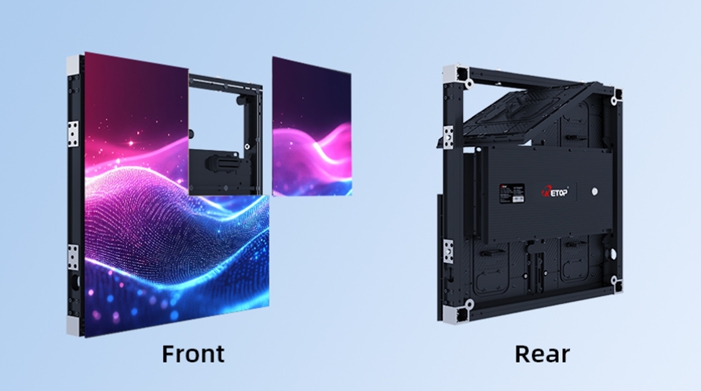Determining the appropriate LED pixel pitch is essential for achieving clear, sharp visuals and a comfortable viewing experience. At Retop, we emphasize careful planning to match the LED screen pixel pitch with its intended environment. Selecting the correct pixel pitch ensures the display delivers high-quality images while meeting the needs of its audience.

What LED Pixel Pitch Means
The term LED pixel pitch refers to the distance between the centers of two adjacent pixels on a display. A smaller pixel pitch provides higher pixel density, producing finer details and sharper images at close viewing distances. Conversely, larger LED screen pixel pitch is suitable for installations where viewers are farther away, such as outdoor billboards or large arena screens.
Retop advises that understanding LED pixel pitch is the first step in planning any LED display. By aligning pixel density with viewing distance, users can achieve the best balance between clarity, performance, and cost. Displays with inappropriate LED screen pixel pitch may appear blurry or fail to meet visibility expectations, which can diminish their effectiveness.
Determining the Optimal Viewing Distance
Once the LED pixel pitch is known, calculating the optimal viewing distance becomes straightforward. A general guideline is that the minimum viewing distance in meters is approximately 1.5 to 2 times the pixel pitch in millimeters. For instance, a 3-mm LED screen pixel pitch is best suited for viewers positioned 4.5 to 6 meters away.
At Retop, we stress that aligning LED screen pixel pitch with viewing distance ensures that text, graphics, and videos appear crisp and legible. Failing to match these factors can result in unclear images, making the display less effective. Additionally, environmental considerations such as lighting conditions and screen size must also be factored into planning.
Factors to Consider for Practical Applications
Several practical considerations influence the choice of LED pixel pitch. Indoor applications, like conference rooms or control centers, benefit from smaller pixel pitch to allow detailed imagery at close range. Outdoor or large venue installations can use coarser LED screen pixel pitch since viewers are farther away and the increased distance compensates for lower pixel density.
Retop also recommends reviewing content requirements. High-detail visuals and text require tighter LED pixel pitch, while simpler graphics may allow for larger spacing. Maintenance access, installation constraints, and budget are additional factors to consider. By addressing these considerations, users can ensure their LED displays deliver high-quality visuals and a satisfying viewer experience.
Conclusion
In summary, evaluating LED pixel pitch and LED screen pixel pitch in relation to viewing distance is essential for achieving optimal display performance. At Retop, we guide clients through the process of aligning pixel density with application needs, environmental conditions, and content requirements. Proper planning ensures that the display remains clear, readable, and visually engaging for its audience. Paying attention to these factors helps maximize the value and longevity of any LED screen installation.
I consent to receive emails about news, marketing&product updates from Retop in accordance with the Retop Privacy Policy